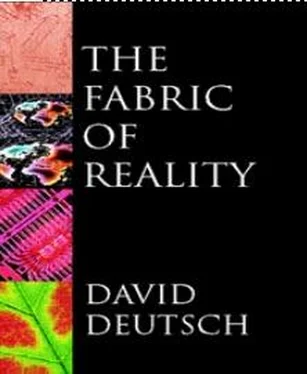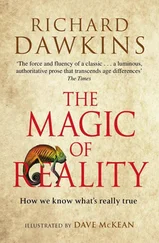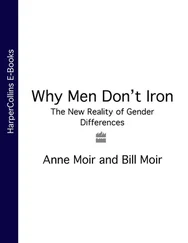David Deutch - The Fabric of Reality
Здесь есть возможность читать онлайн «David Deutch - The Fabric of Reality» весь текст электронной книги совершенно бесплатно (целиком полную версию без сокращений). В некоторых случаях можно слушать аудио, скачать через торрент в формате fb2 и присутствует краткое содержание. ISBN: , Жанр: Физика, Философия, на английском языке. Описание произведения, (предисловие) а так же отзывы посетителей доступны на портале библиотеки ЛибКат.
- Название:The Fabric of Reality
- Автор:
- Жанр:
- Год:неизвестен
- ISBN:0-7139-9061-9
- Рейтинг книги:4 / 5. Голосов: 2
-
Избранное:Добавить в избранное
- Отзывы:
-
Ваша оценка:
- 80
- 1
- 2
- 3
- 4
- 5
The Fabric of Reality: краткое содержание, описание и аннотация
Предлагаем к чтению аннотацию, описание, краткое содержание или предисловие (зависит от того, что написал сам автор книги «The Fabric of Reality»). Если вы не нашли необходимую информацию о книге — напишите в комментариях, мы постараемся отыскать её.
The Fabric of Reality — читать онлайн бесплатно полную книгу (весь текст) целиком
Ниже представлен текст книги, разбитый по страницам. Система сохранения места последней прочитанной страницы, позволяет с удобством читать онлайн бесплатно книгу «The Fabric of Reality», без необходимости каждый раз заново искать на чём Вы остановились. Поставьте закладку, и сможете в любой момент перейти на страницу, на которой закончили чтение.
Интервал:
Закладка:
It was obvious to Aristotle that life is theoretically fundamental; and has large physical effects. As we shall see, he was right. But it was obvious to him for quite the wrong reasons, namely the supposedly distinctive mechanical properties of animate matter, and the domination of the Earth’s surface by living processes. Aristotle thought that the universe consists principally of what we now call the biosphere (life-containing region) of the Earth, with a few extra bits — celestial spheres and the Earth’s interior — tacked on above and below. If the Earth’s biosphere is the principal component of your cosmos, you will naturally think that trees and animals are at least as important as rocks and stars in the great scheme of things, especially if you know very little physics or biology. Modern science has led to almost the opposite conclusion. The Copernican revolution made the Earth subsidiary to a central, inanimate Sun. Subsequent discoveries in physics and astronomy showed not only that the universe is vast in comparison with the Earth, but that it is described with enormous accuracy by all-encompassing laws that make no mention of life at all. Charles Darwin’s theory of evolution explained the origin of life in terms that required no special physics, and since then we have discovered many of the detailed mechanisms of life, and found no special physics there either.
These spectacular successes of science, and the great generality of Newtonian and subsequent physics in particular, did much to make reductionism attractive. Since faith in revealed truth had been found to be incompatible with rationality (which requires an openness to criticism), many people nevertheless yearned for an ultimate foundation to things in which they could believe. If they did not yet have a reductive ‘theory of everything’ to believe in, then at least they aspired to one. It was taken for granted that a reductionist hierarchy of sciences, based on subatomic physics, was integral to the scientific world-view, and so it was criticized only by pseudo-scientists and others who rebelled against science itself. Thus, by the time I learned biology in school, the status of that subject had changed to the opposite of what Aristotle thought was obvious. Life was not considered to be fundamental at all. The very term ‘nature study’ — meaning biology — had become an anachronism. Fundamentally, nature was physics. I am oversimplifying only a little if I characterize the prevailing view as follows. Physics had an offshoot, chemistry, which studied the interactions of atoms. Chemistry had an offshoot, organic chemistry, which studied the properties of compounds of the element carbon. Organic chemistry in turn had an offshoot, biology, which studied the chemical processes we call life. Only because we happen to be such a process was this remote offshoot of a fundamental subject interesting to us. Physics, in contrast, was regarded as self-evidently important in its own right because the entire universe, life included, conforms to its principles.
My classmates and I had to learn by heart a number of ‘characteristics of living things’. These were merely descriptive. They made little reference to fundamental concepts. Admittedly, (loco) motion was one of them — an ill-defined echo of the Aristotelian idea — but respiration and excretion were among them as well. There was also reproduction, growth, and the memorably named irritability, which meant that if you kick it, it kicks back. What these supposed characteristics of life lack in elegance and profundity, they do not make up in accuracy. As Dr Johnson would tell us, every real object is ‘irritable’. On the other hand, viruses do not respire, grow, excrete, or move (unless kicked), but they are alive. And sterile human beings do not reproduce, yet they are alive too.
The reason why both Aristotle’s view and that of my school textbooks failed to capture even a good taxonomic distinction between living and non-living things, let alone anything deeper, is that they both miss the point about what living things are (a mistake more forgivable in Aristotle because in his day no one knew any better). Modern biology does not try to define life by some characteristic physical attribute or substance — some living ‘essence’ — with which only animate matter is endowed. We no longer expect there to be any such essence, because we now know that ‘animate matter’, matter in the form of living organisms, is not the basis of life. It is merely one of the effects of life, and the basis of life is molecular. It is the fact that there exist molecules which cause certain environments to make copies of those molecules.
Such molecules are called replicators. More generally, a replicator is any entity that causes certain environments to copy it. Not all replicators are biological, and not all replicators are molecules. For example, a self-copying computer program (such as a computer virus) is a replicator. A good joke is another replicator, for it causes its listeners to retell it to further listeners. Richard Dawkins has coined the term meme (rhyming with ‘cream’) for replicators that are human ideas, such as jokes. But all life on Earth is based on replicators that are molecules. These are called genes, and biology is the study of the origin, structure and operation of genes, and of their effects on other matter. In most organisms a gene consists of a sequence of smaller molecules, of which there are four different kinds, joined together in a chain. The names of the component molecules (adenine, cytosine, guanine and thymine) are usually shortened to A, C, G and T. The abbreviated chemical name for a chain of any number of A, C, G and T molecules, in any order, is DNA.
Genes are in effect computer programs, expressed as sequences of A, C, G and T symbols in a standard language called the genetic code which, with very slight variations, is common to all life on Karth. (Some viruses are based on a related type of molecule, RNA, while prions are, in a sense, self-replicating protein molecules.) Special structures within each organism’s cells act as computers to execute these gene programs. The execution consists of manufacturing certain molecules (proteins) from simpler molecules (amino acids) under certain external conditions. For example, the sequence ‘ATG’ is an instruction to incorporate the amino acid methionine into the protein molecule being manufactured.
Typically, a gene is chemically ‘switched on’ in certain cells of the body, and then instructs those cells to manufacture the corresponding protein. For example, the hormone insulin, which controls blood sugar levels in vertebrates, is such a protein. The gene for manufacturing it is present in almost every cell of the body, but it is switched on only in certain specialized cells in the pancreas, and then only when it is needed. At the molecular level, this is all that any gene can program its cellular computer to do: manufacture a certain chemical. But genes succeed in being replicators because these low-level chemical programs add up, through layer upon layer of complex control and feedback, to sophisticated high-level instructions. Jointly, the insulin gene and the genes involved in switching it on and off amount to a complete program for the regulation of sugar in the bloodstream.
Similarly, there are genes which contain specific instructions for how and when they and other genes are to be copied, and instructions for the manufacture of further organisms of the same species, including the molecular computers which will execute all these instructions again in the next generation. There are also instructions for how the organism as a whole should respond to stimuli — for instance, when and how it should hunt, eat, mate, fight or run away. And so on.
Читать дальшеИнтервал:
Закладка:
Похожие книги на «The Fabric of Reality»
Представляем Вашему вниманию похожие книги на «The Fabric of Reality» списком для выбора. Мы отобрали схожую по названию и смыслу литературу в надежде предоставить читателям больше вариантов отыскать новые, интересные, ещё непрочитанные произведения.
Обсуждение, отзывы о книге «The Fabric of Reality» и просто собственные мнения читателей. Оставьте ваши комментарии, напишите, что Вы думаете о произведении, его смысле или главных героях. Укажите что конкретно понравилось, а что нет, и почему Вы так считаете.












